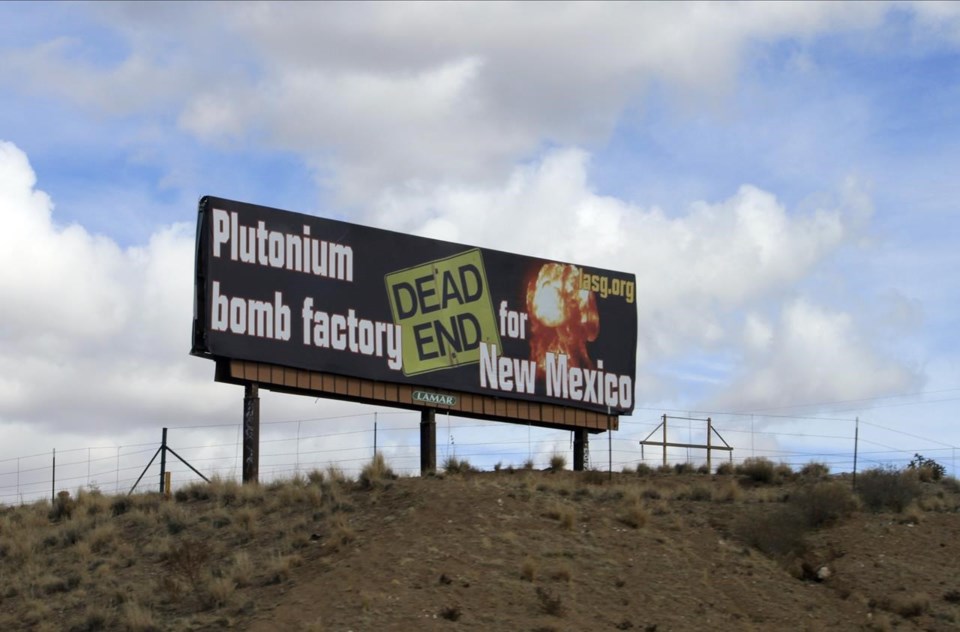ALBUQUERQUE, N.M. (AP) — The U.S. agency in charge of jumpstarting the production of key components for the nation’s nuclear arsenal is falling short when it comes to having a comprehensive schedule for the multibillion-dollar project.
The Government Accountability Office said in a report released Thursday that plans by the National Nuclear Security Administration for reestablishing plutonium pit production do not follow best practices and run the risk of delays and cost overruns.
The federal government has not manufactured plutonium cores regularly in more than 30 years and faces a congressionally mandated deadline of turning out at least 80 per year by 2030.
The GAO describes the modernization effort as the agency’s largest investment in weapons production infrastructure to date, noting that plutonium is a dangerous material and making the weapon cores is difficult and time consuming.
“NNSA lacks both a comprehensive cost estimate and a schedule outlining all activities it needs to achieve this capability,” the reports states.
Nuclear watchdog groups have been voicing similar concerns since the federal government first announced plans in 2018 to restart production by splitting the work between Los Alamos National Laboratory in northern New Mexico and the Savannah River Site in South Carolina.
At stake are billions of dollars in funding for improving infrastructure at the two locations and thousands of jobs.
Democratic members of New Mexico's congressional delegation have fought to ensure Los Alamos — a once secret city that helped develop the atomic bomb as part of the Manhattan Project — would be among the benefactors of the lucrative mission.
Using documents prepared by the nuclear agency for justifying its fiscal year 2023 budget, the GAO identified at least $18 billion to $24 billion in potential costs to build up production capacity.
However, the GAO, other independent analysts and officials in the U.S. Defense Department all have testified in recent years that NNSA would miss the 2030 deadline, no matter how much funding was funneled toward the project.
The NNSA said in a statement Thursday that it agreed with the GAO's recommendations and that some of the work to implement best practices was underway.
“Both the lifecycle cost estimate data and (integrated master schedule) will be updated as needed to reflect the most up-to-date information as the projects and program work progress,” the agency said.
More specifically, the agency said in a letter to the GAO that it planned to complete the cost estimate for the overall project by September 2025 and that the schedule would “continue to mature over time.”
Greg Mello, director of the watchdog Los Alamos Study Group, said Thursday that not having a comprehensive schedule or cost estimate means NNSA does not know what it's doing and has little likelihood of success.
“How can NNSA produce the required number of pits on schedule or on budget, when NNSA has no schedule or budget?” he asked. “These are elementary, normal components in any program or project. After more than two decades of preparation, NNSA doesn’t have them.”
Jay Coghlan, executive director of Nuclear Watch New Mexico, pointed to some of the price tags associated with the project having doubled over the last four years. He said production overall at the two sites could cost at least $60 billion over 30 years with radioactive waste disposal and other environmental and public health concerns adding to the bill.
Until Congress and the New Mexican delegation demand credible cost estimates and schedules, Coghlan said lawmakers “should stop rewarding the guilty with yet more money.”
"That is simple good governance that could help slow our sleepwalk into the new and unpredictable nuclear arms race,” he said.
Mello agreed, saying the mission needs to be widely debated in Congress, not just discussed behind closed doors or by those lawmakers who sit on defense committees.
In its report, the GAO outlined the process for making plutonium pits along with a history of how and where the work was done during the Cold War. The long-shuttered Rocky Flats Plant outside Denver was capable of producing more than 1,000 war reserve pits annually before work stopped in 1989 due to environmental and regulatory concerns.
With a long history of leaks, fires and other violations, Rocky Flats underwent a $7 billion cleanup that was finished in 2005.
During the Obama administration, a council made up of defense and energy officials told Congress the nation needed to produce between 50 and 80 pits per year. Congress included a legal mandate for production in a 2015 defense measure that was subsequently approved and signed by the president.
That mandate was later amended to call for the 80 pits in 2030. According to the GAO, some of the construction projects and upgrades needed for the work at Los Alamos won't be finished for several years.
Susan Montoya Bryan, The Associated Press


